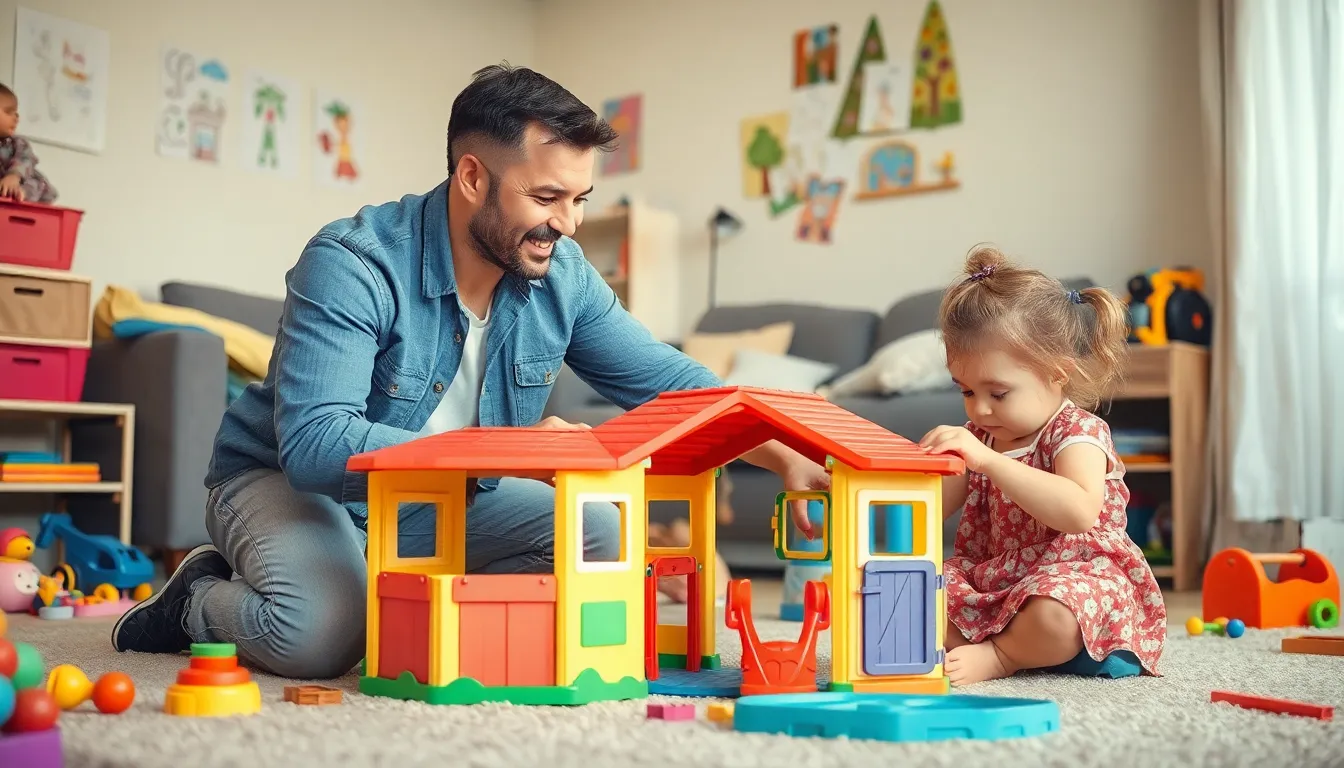Imagine juggling a newborn and a toddler while trying to remember if you left the oven on. Welcome to the world of tandem adoption and pregnancy, where families grow in the most unexpected and delightful ways. This journey isn’t just about expanding your family; it’s about embracing the chaos, love, and laughter that come with it.
Table of Contents
ToggleUnderstanding Tandem Adoption
Tandem adoption involves adopting a child while simultaneously raising another, often a biological child or a previously adopted child. This approach addresses the needs of both children, creating a family dynamic that nurtures love and support.
Definition and Key Concepts
Tandem adoption refers to adopting a child during or shortly after experiencing pregnancy or birth. It often includes adopting a sibling or another child of a similar age. Families choose this route for various reasons, such as wanting to provide companionship for their children or fulfilling a desire to expand their family. The process emphasizes balance and equal attention to both the newborn and the toddler. Understanding this concept is crucial for families considering tandem adoption.
The Process of Tandem Adoption
The tandem adoption process requires careful planning and consideration. Prospective parents start by researching adoption agencies, focusing on those that support tandem scenarios. They often complete a home study to assess the family’s readiness, which involves evaluations from social workers. Once approved, parents may match with a child, taking steps to integrate the new child into the family smoothly. Continuous communication and support are essential, ensuring that both children feel included and loved throughout the transition. Families often seek resources to help navigate the challenges associated with raising a newborn and a toddler simultaneously.
The Experience of Pregnancy in Tandem Adoption
Pregnancy during tandem adoption brings a unique blend of emotions and challenges. Parents navigate the complexities of integrating a new child into their family while managing the demands of their existing children.
Emotional Considerations
Emotions can fluctuate significantly during this time. Parents experience joy when welcoming a new child and anxiety regarding their ability to facilitate bonding among siblings. Feelings of guilt may arise, especially if attention seems divided. Stress related to parenting two young children simultaneously often manifests as parents worry about meeting each child’s needs. Open communication among family members serves as a crucial tool to foster understanding and support. By acknowledging these emotions, parents strengthen their family relationships and reinforce the bonds between siblings.
Physical Challenges
Physical challenges become part of the journey for parents under these circumstances. Fatigue typically increases as they care for a newborn and manage the activities of an older child. Coping with prenatal discomfort, such as nausea or back pain, adds to the complexity. Navigating the logistics of daily life becomes more demanding, often requiring strategic planning for meals, exercise, and self-care. Balancing responsibilities while ensuring each child receives attention may seem daunting. Many parents discover that asking for help or seeking respite care proves beneficial in maintaining their well-being during this transition.
Benefits of Tandem Adoption
Tandem adoption provides numerous advantages that enhance family dynamics and child development.
Strengthening Family Bonds
Tandem adoption cultivates deep connections among family members. Parents often experience a unique opportunity to engage with both children simultaneously, promoting togetherness. Siblings may form strong relationships, sharing experiences and creating memories. Parents witness the love and care children show one another, which fosters an environment filled with mutual support. Encouraging joint activities strengthens these bonds, such as family outings and shared playtime. In this setting, children develop a sense of belonging and security, facilitating emotional growth.
Fostering Resilience in Children
Tandem adoption nurtures resilience in children by exposing them to diverse experiences. Facing the challenges of integrating a new sibling encourages adaptability and problem-solving skills. Children learn to navigate relationships and share their emotions, which builds emotional intelligence. The presence of a sibling can also offer invaluable companionship, helping each child process transitions together. This shared journey can lead to lifelong support systems, instilling confidence as they encounter future challenges. Parents also play a crucial role, modeling resilience through their actions and fostering a culture of perseverance within the family.
Challenges of Tandem Adoption
Tandem adoption presents unique challenges. Families face various hurdles as they navigate social expectations and balance the distinct needs of their children.
Social Perceptions and Stigmas
Society often holds preconceived notions about adoption and family structures. Many individuals question the dynamics of families formed through tandem adoption. Experiences with stigmas can lead to discomfort in social situations. Families might encounter unsolicited opinions about their parenting choices or the perceived adequacy of their family unit. Educating others about the positive aspects of tandem adoption can alleviate some of these societal pressures. Greater acceptance comes with open conversations that highlight the love and care present in these families.
Balancing Needs of Biological and Adopted Children
Meeting the diverse needs of biological and adopted children requires careful consideration. Children from different backgrounds may react differently to the presence of a new sibling. Parents often find themselves juggling attention between the needs of a newborn and those of an older child. Creating individual time for each child fosters emotional security and bond development. Attention can include involving siblings in adoption discussions to strengthen their connection. Ensuring both children feel valued and respected is essential for maintaining harmony within the family. Adopting tailored approaches to parenting helps nurture a supportive environment for all involved.
Conclusion
Tandem adoption and pregnancy present a unique journey filled with both challenges and rewards. Families embracing this path cultivate strong bonds and foster resilience in their children. The integration of a new child into a household with an existing toddler or newborn requires thoughtful planning and open communication.
Parents play a crucial role in navigating the complexities of this experience by ensuring each child feels valued and loved. By focusing on joint activities and creating individual time for each child, families can build a nurturing environment that supports emotional growth.
Ultimately, tandem adoption not only enriches family dynamics but also promotes adaptability and emotional intelligence in children. As families continue to share their stories, they contribute to a broader understanding and acceptance of tandem adoption, paving the way for others to embark on this fulfilling journey.







